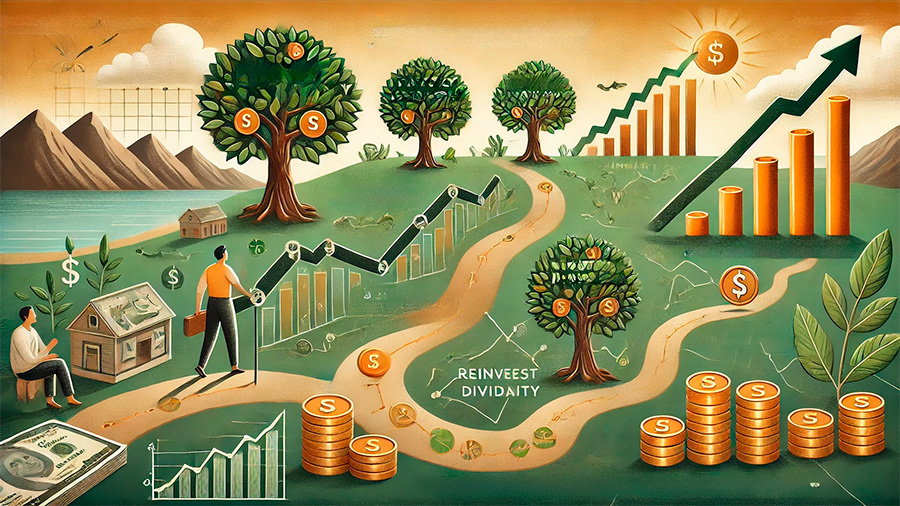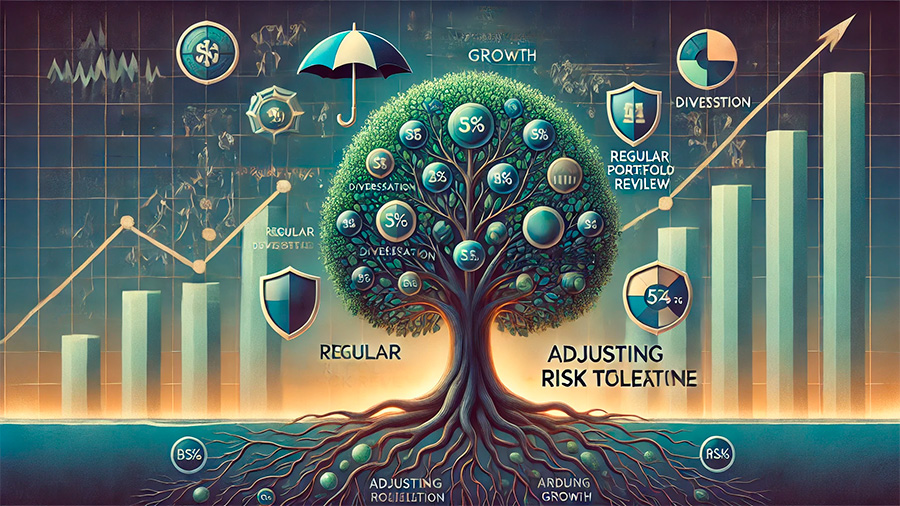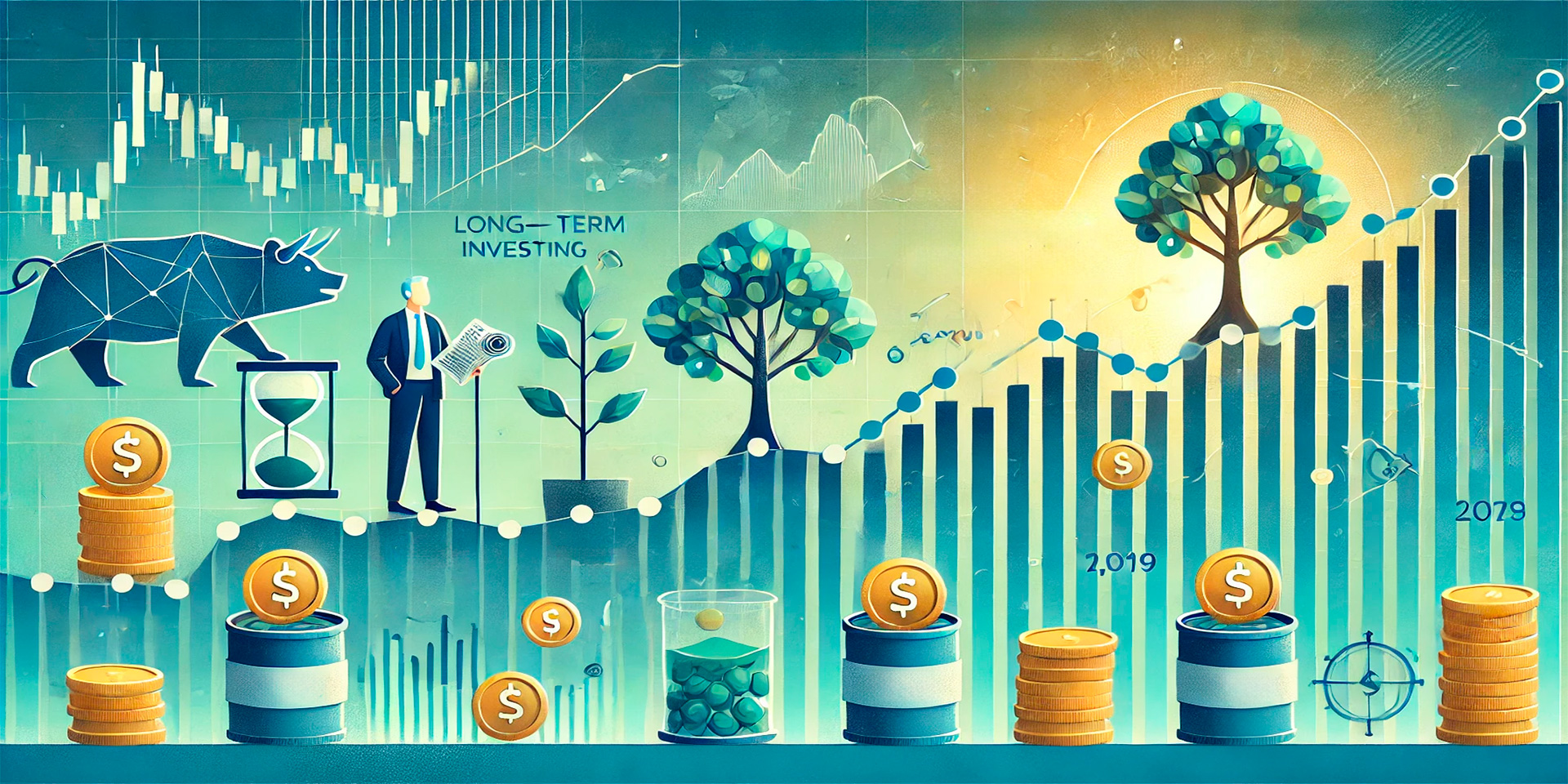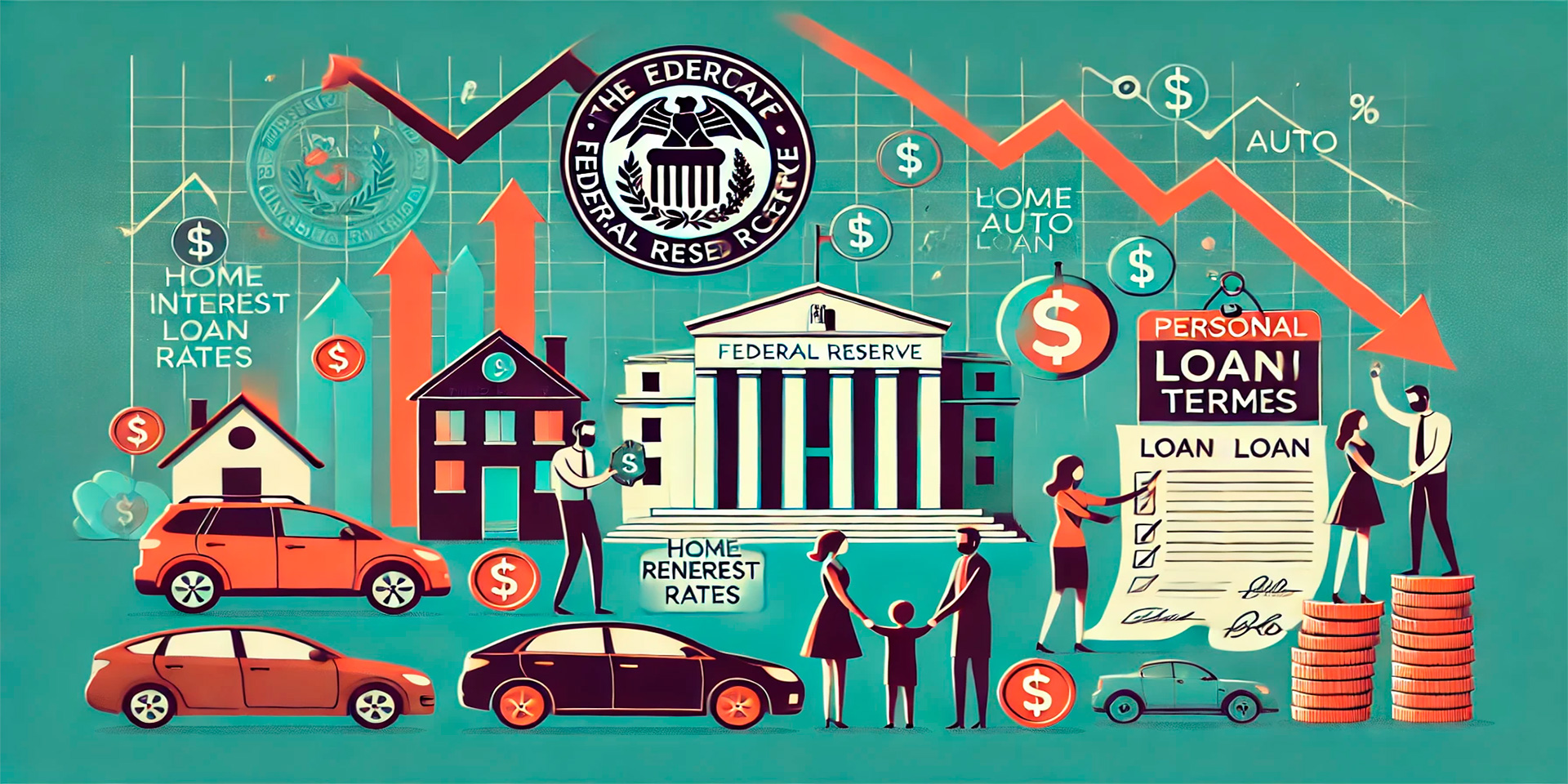Long-term investing is widely regarded as one of the most effective strategies for building wealth. Instead of trying to capitalize on short-term market movements or engaging in frequent trading, long-term investors hold their investments for extended periods, often years or even decades. The focus is on steady, sustained growth over time, which can help reduce risk, minimize costs, and allow the power of compounding to work in your favor.
In contrast to short-term strategies, which rely on market timing or quick gains, long-term investing is rooted in the idea that financial markets tend to rise over time, despite periods of volatility. By maintaining a long-term perspective, you can avoid the emotional pitfalls of short-term market swings and capitalize on the upward trajectory of well-selected investments.
This article will explore the key principles of long-term investing and provide actionable strategies to help you maximize your returns by holding investments for the long haul.
Why Long-Term Investing Works
Long-term investing works because it takes advantage of key financial principles like compounding returns, the growth of the broader economy, and the ability to ride out market volatility. Over time, these factors combine to generate substantial returns, even from relatively modest investments.
The Power of Compounding
Compounding is the process where the returns on your investments generate their own returns. By reinvesting dividends and letting your investment gains accumulate, you create a snowball effect where your wealth grows at an accelerating rate over time.
How it works: Suppose you invest $10,000 in a portfolio that earns an average annual return of 7%. After 10 years, your investment would grow to about $19,670. If you continue to hold it for another 10 years, the value would nearly double again, reaching $38,700. The longer you stay invested, the more powerful compounding becomes.
Reinvesting dividends: By reinvesting dividends from stocks or funds, you increase your shareholdings over time, further enhancing the compounding effect.
Compounding is one of the primary reasons long-term investing is so effective. The earlier you start, the more time your investments have to grow exponentially.
Minimizing Market Volatility
Markets are inherently volatile in the short term, with prices fluctuating in response to economic events, political developments, and investor sentiment. However, over the long term, stock markets have historically trended upwards. Long-term investors benefit from staying the course through market cycles, rather than trying to time the market’s ups and downs.
- Riding out downturns: By holding onto your investments during market downturns, you avoid selling at a loss and missing the market’s eventual recovery. For example, investors who held onto their stocks through the 2008 financial crisis saw their portfolios recover and grow as the market rebounded in subsequent years.
- Emotional discipline: Long-term investing requires emotional discipline. Avoiding panic selling during periods of market decline and focusing on your long-term goals helps you stay invested and capitalize on future growth.
The key to successful long-term investing is remaining patient and focusing on the long-term potential of your investments, even when markets are volatile.

Key Strategies for Maximizing Long-Term Investment Returns
To maximize returns with a long-term investing strategy, it’s important to adopt the right approach from the start. Here are key strategies to help you achieve success through long-term investing.
1. Focus on Quality Investments
One of the most important aspects of long-term investing is selecting high-quality investments that are well-positioned for growth over time. Whether you’re investing in individual stocks, mutual funds, or ETFs, look for companies with strong fundamentals and a proven track record of success.
- Earnings growth: Choose companies with consistent earnings growth and a strong business model. Companies that regularly increase profits are more likely to generate long-term returns for investors.
- Competitive advantage: Focus on businesses with a durable competitive advantage, such as strong branding, proprietary technology, or dominant market positions. Companies that can maintain their edge over competitors are better equipped to thrive over the long term.
- Strong balance sheet: Companies with low debt and high cash reserves are more likely to withstand economic downturns and continue to grow during challenging times.
Investing in high-quality companies helps reduce risk and increases the likelihood of achieving steady, long-term returns.
2. Diversify Your Portfolio
Diversification is a crucial strategy for reducing risk and maximizing returns in the long run. By spreading your investments across a variety of asset classes, sectors, and geographic regions, you reduce the impact of any single investment’s poor performance on your overall portfolio.
- Asset class diversification: Invest in a mix of stocks, bonds, and other asset classes such as real estate or commodities. Each asset class reacts differently to economic changes, providing balance to your portfolio.
- Sector diversification: Spread your investments across different sectors of the economy, such as technology, healthcare, finance, and consumer goods. This diversification helps you avoid overexposure to any one industry.
- Geographic diversification: Include international investments to capture global growth opportunities. By diversifying across different regions, you reduce the risk associated with the economic conditions of a single country.
Diversification helps smooth out returns over time and protects your portfolio from large losses due to the underperformance of a specific investment.
3. Use Dollar-Cost Averaging
Dollar-cost averaging (DCA) is an investment strategy that involves investing a fixed amount of money at regular intervals, regardless of the market’s current price. This approach reduces the impact of market volatility on your portfolio and ensures that you’re consistently building your investments over time.
- How it works: With dollar-cost averaging, you invest a set amount on a regular schedule, such as monthly or quarterly. When prices are low, you buy more shares; when prices are high, you buy fewer shares. Over time, this strategy reduces the average cost per share.
- Benefits: DCA reduces the risk of investing a large lump sum at the wrong time, such as right before a market downturn. It also helps you stay disciplined by maintaining a consistent investment plan.
Dollar-cost averaging is particularly useful for long-term investors who want to avoid the pitfalls of trying to time the market.
4. Reinvest Dividends
Reinvesting dividends is a powerful way to maximize your long-term returns. Many companies pay dividends to shareholders, providing a regular income stream. Instead of spending these dividends, reinvesting them allows you to buy more shares and increase your ownership in the company.
- Compounding effect: Reinvesting dividends accelerates the compounding effect, as your investment grows not only from price appreciation but also from the additional shares you accumulate over time.
- Dividend growth: Focus on companies that not only pay dividends but regularly increase their payouts. Dividend growth stocks tend to be financially healthy and offer both income and capital appreciation potential.
Reinvesting dividends is a simple yet effective strategy for enhancing your long-term returns, especially in dividend-paying stocks.
5. Keep Fees Low
Investment fees can eat into your long-term returns, so it’s important to minimize costs wherever possible. Even small fees can add up over time and reduce your overall gains.
- Low-cost funds: Choose index funds or ETFs with low expense ratios. Index funds typically have lower fees than actively managed funds because they track a market index rather than relying on active stock picking.
- Avoid frequent trading: Trading too frequently generates transaction costs and may lead to higher taxes, both of which can erode your returns. Long-term investors should aim to minimize trading activity and focus on holding investments for extended periods.
By reducing fees and limiting trading costs, you can keep more of your returns working for you over the long term.

Managing Risks in Long-Term Investing
While long-term investing is generally a lower-risk strategy compared to short-term trading, it’s still important to be aware of and manage potential risks. Here’s how to protect your portfolio while aiming for long-term growth.
1. Stay Calm During Market Volatility
Market volatility is a normal part of investing, and it’s important not to panic when prices fluctuate. Selling during market downturns locks in losses and prevents you from benefiting from future market recoveries.
- Stay the course: Long-term investors should focus on their broader financial goals and avoid making emotional decisions based on short-term market movements.
- Take advantage of opportunities: Volatile markets can create opportunities to buy high-quality investments at discounted prices. By staying calm and sticking to your strategy, you can capitalize on market dips.
Remaining patient and focused on the long-term horizon is critical to weathering market volatility and achieving success.
2. Rebalance Your Portfolio Regularly
Over time, your portfolio’s asset allocation may shift due to market performance. For example, if stocks perform well, they may make up a larger percentage of your portfolio than you originally intended, increasing your risk exposure. Rebalancing helps bring your portfolio back in line with your target allocation.
- Rebalance frequency: Rebalance your portfolio annually or whenever your asset allocation drifts by more than 5% from your target. This helps ensure that your portfolio remains diversified and aligned with your risk tolerance.
- How to rebalance: Sell a portion of the overperforming assets and use the proceeds to buy underweighted ones. For example, if stocks have grown beyond your target allocation, sell some stocks and use the proceeds to buy bonds or other assets.
Regularly rebalancing your portfolio helps maintain the appropriate level of risk and ensures that your investments stay aligned with your long-term goals.
Final Thoughts: Maximize Returns with Long-Term Investing
Long-term investing is a time-tested strategy for building wealth, providing investors with the opportunity to capitalize on market growth, compounding returns, and reduced risk. By focusing on quality investments, diversifying your portfolio, and staying patient through market volatility, you can maximize your returns over time.
Strategies like dollar-cost averaging, dividend reinvestment, and regular portfolio rebalancing further enhance your ability to achieve long-term financial success. By maintaining a disciplined approach and avoiding emotional reactions to market fluctuations, you can unlock the full potential of long-term investing and build lasting wealth for the future.





